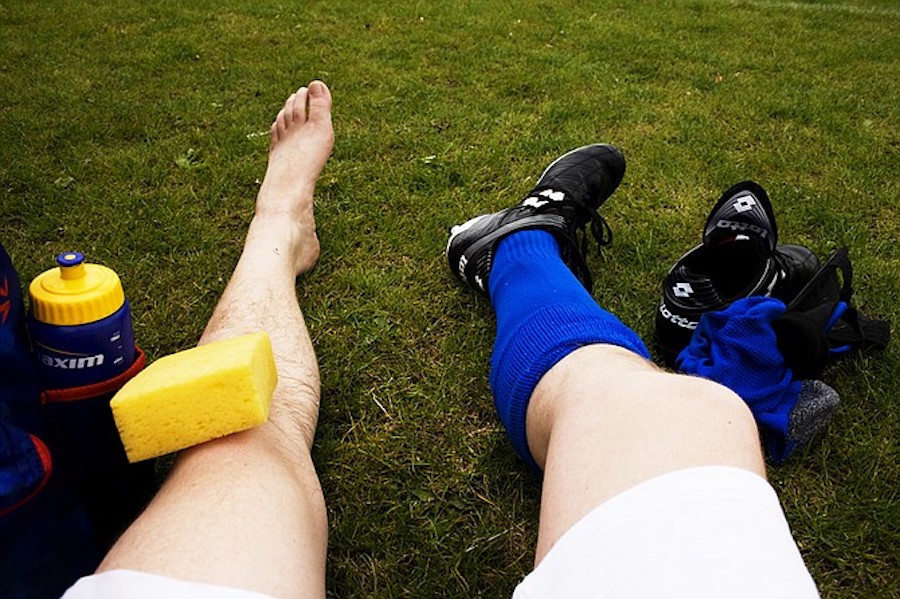On Sunday it was North London, on Thursday it was Bulgaria. The next Sunday it was down to Southampton and Tuesday over to East London. Thursday was North Macedonia and Sunday was North London again. Then Tuesday over to West London, before back north for Thursday. A trip to Manchester on Sunday rounded off a two-week period of travel that would have exhausted Phileas Fogg. And that’s before you even factor in 90 minutes of running on a football field at every stop on the way.
It’s no wonder that Jose Mourinho, the notoriously outspoken manager of the English Premier League side Tottenham Hotspur, began talking about sacrifices — both to his team’s chances of success and his players’ bodies. That was the travel schedule with which Spurs kicked off the 2020-21 season, with Mourinho’s team involved in three competitions and football fixtures piled up on top of one another. The manager knew that he could probably expect defeat in some games and, worse, injuries to top players.“I would like to fight for the Carabao (Cup) but I don’t think I can,” Mourinho said amid the congestion in September, preparing supporters for defeat in English football’s third most important competition. Referring to an injury to Heung-min Son, the Tottenham striker, Mourinho added: “I think Sonny was just the first. More will come. Son was the first, but more will come.”
It seems perfectly intuitive that the more football players are required to play, the more their performances will dip and the greater the risk of injury becomes. No human body can withstand the kind of physical demands required of elite-level footballers, a situation made all the more pressing by the Covid-19 pandemic which compressed fixture lists into even tighter timescales. However, two months after Mourinho’s statement, his Tottenham team were top of the Premier League, into the quarter finals of the Carbao Cup and through the group stages of the Europa League with a game to spare. Son is at peak fitness and has scored 13 goals in all competitions, among the most of anyone in Europe.
So it raises the question: what actually are the effects of fixture congestion on footballers — both their bodies and their performances? Several academic studies have looked at the precise issue over the past few years and the conclusions may surprise a few people.
In October of this year, Liam Harper, from Huddersfield University, Richard Page, of Edge Hill University, and Ross Julian, from the University of Münster in Germany, published a study titled “The Effect of Fixture Congestion on Performance During Professional Male Soccer Match-Play: A Systematic Critical Review with Meta-Analysis“. As its title suggests, it was serious and wide-reaching, first laying out the definition of fixture congestion (“a minimum of two successive bouts of match-play, with an inter-match recovery period of < 96 hours"), then clearly stating an objective ("We sought to conduct a systematic review and meta-analysis of the literature related to the effects of fixture congestion on physical, technical, and tactical performance in professional soccer match-play") and then describing a methodology. The academics studied 16 articles on the subject, analysing five particularly closely, before coming to a frank conclusion: "Total distance covered [i.e., the amount of running top-flight players actually do during a match] is not impacted by fixture congestion." The stats just seemed to show that there was almost no change in how much ground players covered whether they were in the middle of a fixture pile-up or not. However, although players were running just as far during matches, performances weren't quite the same. The study also noted that they were reducing the number of sprints and so-called "high-intensity" runs during a match, instead opting for longer spells jogging or walking on the pitch. That is significant because previous studies point to the importance of high-intensity sprints in producing the most important moments in a match: goals. "Sprints and high intensity running...are usually linked to notable actions in a game, with a German study showing that 45 percent of goals are preceded by a sprint," Harper (et al) write in the study.
Harper posited that fixture congestion might end up costing teams at the other end of the pitch too. Although there isn’t vast evidence focused on teams’ defensive performances, there are hints that teams with a congested fixture list might be more prone to lapses of concentration at the back. One study looked at the reigning English champions Liverpool, whose manager Jurgen Klopp has also been an outspoken critic of modern football’s fixture lists, and noted that defensive players were more commonly caught in incorrect positions when they were perhaps fatigued by a concentrated run of fixtures.
“In a congestion cycle, synchronisation between players might reduce,” Harper writes. “For example, the distance between a right back and a right winger might become greater. Then, the right back doesn’t recover as quickly, is more exposed to counter attacks, and opponents might find more space on their left flank. The defensive midfielder might have to work more, and the team gets pulled around…A combination of fatigue and less time to work on tactics and shape during fixture congestion makes the coach’s job even harder.”
The circumstances may, however, offer an opportunity to some of the most wily coaches to experiment with new styles of play. By early December, Mourinho had overhauled Spurs’s tactics and was reaping great reward, even if he still complained about the fixture congestion. In an article in The Times, journalist James Gheerbrant looked at Tottenham’s performances in the first third of the Premier League season — a period during which Spurs had emerged as the unlikely league leaders having conceded the fewest goals in the division and scored the second most.
“Tactically, Tottenham are a very different animal from the other title contenders,” Gheerbrant writes, describing a “much leaner, more drilled” Tottenham compared with Mourinho’s first season in charge. Spurs sit back far more than other teams, ranking 13th in the league for passes in the attacking third, and they don’t challenge very often for the ball in the opposition’s half either, also ranking 13th for turnovers, according to league statistics. “In short, Spurs neither possess nor press the ball in advanced areas nearly as much as their competitors do,” Gheerbrant writes.
The game-plan owes much to Tottenham’s two lethal attackers — the England captain Harry Kane, alongside the aforementioned Son — both of whom have remained mostly fit and in excellent form, despite early injury fears. But it’s also interesting to note how Mourinho’s early concerns over burn-out have actually contributed to a revised playing style — and a successful one at that.
The Premier League now heads into a Christmas period that is, as traditional, stacked with fixtures (the pandemic meant a Christmas break was forsaken this year) and studies suggest that managers are justified in worrying about their players’ fitness. The UEFA Elite Club Injury Study (UEFA-ECIS), which has, since 2001, “collected player exposure and injury data from nearly 50 top-level football clubs from 17 different countries” and is updated every year, has consistently drawn a correlation between lack of rest days between matches and common football injuries, particularly muscular, sustained on the field.
“The physical demands on a professional football player are high,” the 2013 report begins. “The mean total distance covered during a football match is reported to be between 10,000 – 11,000 meters, with some players covering up to 14,000 meters, and almost one fourth of this distance is covered in high intensity running.
“Studies have shown that it takes several days to fully recover following a football match. Remaining fatigue up until 72 hours after a football match has been shown in terms of decreased physical performance as well as through increased levels of blood markers indicating muscle damage and oxidative stress. In addition, mental preparation and travels before a match may further contribute to fatigue.
“Playing professional football matches, especially when playing away, is associated with long travels and unfamiliar sleeping environments which may have a negative impact on the quality of the sleep for the players.”
Players this year have had to perform without supporters inside stadiums, robbing them of the adrenaline boost associated with a roaring crowd, but have kept up the punishing travel schedules. Klopp, the Liverpool manager, is not alone in bemoaning an ever-lengthening injury list and is pushing for assistance from the relevant associations in reducing the workloads. He wants the football authorities to allow teams to use five substitutions in games, and to ensure there are longer gaps between matches.
“It’s not about me. It’s not about Liverpool. It’s about player welfare,” Klopp said. “This now is not a normal season. This now is a season which is four weeks shorter but with the same amount of games…Sports science says you need at least 72 hours to recover.”
Whether Klopp gets his wish remains to be seen, and lucrative contracts with broadcasters, which have made up some of the shortfall in club finances depleted by the absence of fans, still demand the top clubs to appear in the televised slots. But with players falling like flies, presumably the broadcasters and authorities will realise soon enough that their programs’ quality is dipping too.
And with so much else to be miserable about, football fans need to see the stars shining brightly. That means they need to be fit.
Back to TopView Other Blogs
























